Simple is usually better. The same is true for many things, including wire harness and cable assembly designs, and it’s the concept behind the common practice of Design for Manufacturability (DfM). Its implementation in the electrical and mechanical assembly industry is a critical element in increasing a product’s quality, speed to market and, ultimately, its success.
The least disruptive and least expensive way to address problems with a project is early in the design phase. The further down the manufacturing process a product travels, the more difficult and complex it becomes to pinpoint and correct any defects or issues. Through a set of DfM practices, specific guidelines help define various tolerances and other data to ensure each phase operates as desired before moving on to the next step in the manufacturing process.
Manufacturers hoping to improve product quality, reduce lead times and increase profitability should consider DfM as a way of achieving these goals, and should consider the following when implementing its practices.
Reduce Design Complexities
The more complex an assembly is, the more opportunities there are for something to go wrong. It’s amazing how many assembly designs end up on production floors with a virtual labyrinth of tangled wire configurations and components when a simpler layout would suffice. All those extra wires, mounts, connectors and splices present opportunities for increased wire fatigue, pinching, improper tensioning, arching and other failures.
Automate Production
Manual assembly of products inevitably increases labor costs and introduces the likelihood of human error. The simpler a wire harness is, the more easily the assembly and production process can be automated through robotic or high-speed automation. Doing so results in a more uniform and higher quality product that can be delivered more quickly.
Use Standardized Parts
Keep designs as straightforward as possible by using standardized parts when available. Commercial off-the-shelf parts (COTS) may be able to replace a component in your assembly and serve the same function while offering greater cost and time savings, not to mention less opportunity for failure. COTS have been thoroughly tested in advance, so their use when possible can mitigate a number of risks.
Keep Installation and Repairs in Mind
Some assemblies span great distances, but increasingly, assemblies are required to fit inside the confines of perpetually smaller compartments. Ease of installation within the final end product should be a consideration in design for manufacturability, and accessing it easily afterwards for any potential repairs or adjustments needs to be factored in as well. A poorly thought-out design could diminish any saved productivity on the production floor if installation becomes cumbersome and takes too much time on the back end.
Use Suppliers That Practice DfM
Perhaps the best way to save time and money is for engineers to partner with suppliers that can take their initial design and help to perfect it using DfM principles. Often, an OEM’s designer who draws up its electrical assembly configurations will benefit from having a second set of eyes to review the drawings. Ideally, this should happen early on in the concepting phase, but it can be beneficial during any part of the development phase prior to production. Engineers that are solely focused on designing electrical assemblies work with the latest technology, are familiar with the latest industry compliance regulations and can often quickly spot areas for improvement to reduce the likelihood of failure and increase the likelihood of success.
MCL will gladly help your organization by providing a free design review and cost-saving analysis of your assembly using our proprietary enhancement process. Simply click the link below to request your review today and, as always, reach out to our team with any questions.





